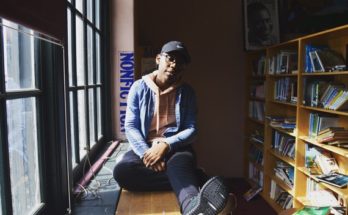By Jenny Luna, Lou Mariller, and Stephanie Ortigoza
On a Friday evening in May, when parents picked up their children from P.S. 8 in Brooklyn Heights, the students all had their hair colored brightly for the school’s “Crazy Hair Day.” Parents bought ice cream for overjoyed children, who distributed Mother’s Day cards. It’s not just crazy hair that causes the students at P.S. 8 to stand out — on this day and every day. The magnet school also has an unusually large number of white students for Brooklyn’s District 13: While only 12.5 percent of the district’s students are white, 60 percent of P.S. 8 students are Caucasian.
“There was more diversity in my school growing up in the Midwest,” said Suzanne Subracko, a P.S. 8 parent who moved to Brooklyn from Seattle a year ago.
District 13, with its quickly gentrifying (or already gentrified) neighborhoods, and its mix of neighborhood, district, and citywide charter and public schools, makes for an interesting case study in what causes school segregation. Among the 58 schools in District 13, which encompasses upscale townhouses and homeless shelters stretching from Brooklyn Heights to Fort Greene, four schools have significantly more white students than their district’s counterparts. Meanwhile, 11 schools have less than one percent white students.
In some cases, this shift reflects longstanding residential patterns. In others, it is the result of rapid gentrification. At still other schools, segregation increased after specialty programs developed, such as gifted and talented classes, which enrolled disproportionate numbers of white students. Once the demographics became skewed by race, it was hard to turn back the clock.
The disproportionate number of white students at P.S 8 is mostly about residential segregation. “It’s the neighborhood that’s not diverse,” explained Emy Gargiulo, a mother of two who has a 10-year-old at P.S. 8.
Prior to 2004, P.S. 8 was labeled a so-called failing school by the Department of Education. A three-year magnet grant for arts enrichment in 2004 and a major restructuring helped to turn the school around, as a 2005 New York Times article reported. Test scores increased, and parents in the neighborhood who used to send their children to private schools started considering P.S.8 as a viable option. Meanwhile, an increase in residential development also participated to an increase in student enrollment that is expected to continue.
According to the school’s website, 3,750 housing units will be built by 2017. P.S.8 is the only zoned public school in zip code 11201 in Brooklyn Heights, where whites comprise a significant majority. P.S. 8 has an active parent-teacher association and a wide range of after-school activities, including robotics, cheerleading, gardening and drama. The school’s partnership with the Guggenheim Museum brings speakers to the elementary school on a weekly basis and the social studies-based curriculum facilitates creative approaches to learning.
A logical solution to abating school segregation would be to open schools to wider geographic areas. But District 13 shows that this isn’t always the ideal answer. Most of the schools in District 13 with a disproportionate number of white students are, in some way, open to students throughout the district.
P.S. 9 Teunis G Bergen School, for example, also has far more white students than the district’s average. The school, located in Prospect Heights, is technically zoned for students in the surrounding area, but it also accepts students from the entire district for its gifted and talented and dual language programs. In 2011, the school had 14 percent white students; now it has nearly 26 percent. The percentage of black students decreased over the same period, from 63 to 49.
The gifted and talented program has been longstanding and a dual language program opened in 2012. Each grade has one talented and gifted class, according to a P.S.9 report. Although the demographics for the gifted and talented program at P.S. 9 are unavailable, InsideSchools reported that it’s likely disproportionately white compared to the rest of the school.
Admission for gifted and talented programs in New York City is based on an exam, and far more white students apply and get in. While African Americans and Latinos make up two-thirds of the school population across the city, they make up only one-fourth of elementary school students in gifted and talented programs, according to James Borland, an education professor at Columbia’s Teachers College. He is opposed to the tests that get students into the programs.
Admission is based off the “scores of two standardized tests given to children who are four years old, and family of origin plays a major role,” Borland said. “The families who can afford for their four year olds to go to a test prep class have more of chance to go to a talented and gifted program.”
Park Slope’s P.S 133, also in District 13, accepts students from both District 13 and District 15 ever since it changed location in 2013. In 2010-2011, P.S 133 had 42 percent black students and 10 percent white students. But this year, the percentage of white students tripled to 30. The explanation for this transformation lies in shifting demographics, as the surrounding neighborhood rapidly gentrifies.
At P.S. 133, and some other schools in the district, school leaders are trying to ensure the school maintains at least some racial and socioeconomic balance. As part of Principal Heather Foster Mann’s efforts, the school succeeded last year in convincing the Department of Education to set aside 35 percent of kindergarten seats for kids who receive free or reduced lunch and are English language learners. In 2011, the school started a dual language program — in both French and Spanish.
But as a report released by the city showed in 2014, and despite Foster Mann’s efforts, the number of ELL learners at P.S 133 dropped from 2013 to 2014, largely because many who were offered spots refused it — probably because of commuting issues (as an extensive analysis of the school’s evolution on DNAinfo shows). This year, P.S.133 will implement yellow bussing in District 15 in order to pick up English language learners directly from different neighborhoods. Meanwhile, Foster Mann does not work alone: a task force led by parents, principals and the district superintendent, Barbara Freeman, is working to promote more diversity in the district’s schools.
A fourth school that attracts significantly more white students than others in the district went from 8 percent white students in 2010-2011 to 27 percent in 2014-2015. The Academy of Arts and Letters in Fort Greene expanded in 2010 from a middle school to a Kindergarten through eighth grade school, causing some tension with P.S. 20 that shared the building. Parents at P.S. 20 worried about overcrowding and losing a spot in the middle school to students who started at Arts and Letter from kindergarten. During that time, the percentage of students eligible for free and reduced lunch plummeted. Its principal, John O’Reilly, wants to reserve a portion of seats — up to 40 percent — for low-income students.
According to Amy Stuart Wells, an education and sociology professor at Teachers College who has written extensively on school segregation, integration efforts led by individual schools are not enough. True change, she believes, must be much more systemic.
Editor’s Note: Thanks to comments from readers, this story reflects some clarifying notes in bold, including context on how and why The Academy of Arts and Letters and P.S. 8 enrolled more and more white students.
This is part of a series by School-Stories.org staff that explores New York City — home to the most segregated school district in America. For more, click here.




I appreciate the effort to cover a complex and important topic. But I think this article misstates or omits the factors at play at all 4 schools with larger than average white populations in district 13.
PS 8 did not become majority white after 2004 because of new residential development. Brooklyn Heights is a long-standing white enclave but it was 2004 when the school was awarded a magnet grant and more white parents from the neighborhood started sending their kids there.
i don’t understand why the article states that the G&T program at PS 9 “extended from kindergarten to fifth grade in 2012.” The G&T program had been going up to 5th grade for years before that. The program had a different name (the LEAD program) and was almost all black with some South Asian kids. The changing demographic at the school is partly a result of gentrification in the neighborhood. Most of the white kids (and biracial and black kids) in the G&T program live in the neighborhood. The lower grades (G&T and general ed) do tend to have more white students and then the white parents have pulled their non-G&T kids out to go to different schools in the higher grades.
Gentrification in the immediate neighborhood is not what caused the dramatic demographic shift at PS133. PS 133 became a school of choice in 2013 and now is open to students from district 13 and 15 not just to families in the surrounding neighborhood. The school did not move to a new location in 2013 — it returned to its old location in a newly constructed building.
Also the article did not mention one of the big factors in the demographic shift at Arts and Letters is that the school used to just be a middle school but then opened an elementary school which attracted many more white families to the school from across the district.
Gentrification or school choice alone won’t increase diversity in district 13 schools. The sad reality is that most white parents won’t send their kids to majority black schools (even high-performing ones) unless there is a “critical mass” of white families at the school. That is why some white parents in district 15 are trying to “gentrify” certain majority non-white middle schools by applying en masse to these schools.
Here’s what one of the parents in our area responded to your article after reading it on our Facebook post. What do you have to say?
I don’t think this article is well researched. It misstates or omits the factors at play at all 4 schools with larger than average white populations in the district. PS 8 did not become majority white after 2004 because of new residential development. Brooklyn Heights is a long-standing white enclave but it was around 2004 when more white parents from the neighborhood started sending their kids there. At PS 9, the gifted and talented program did not first extend from kindergarten to 5th grade in 2012. The G&T program had been going up to 5th grade for years before that. The program had a different name (the LEAD program). The changing demographics is largely a result of gentrification in the neighborhood. Most of the white kids (and biracial and black kids) in the G&T program live in the neighborhood. But gentrification in the immediate neighborhood is not what caused the dramatic demographic shift as a PS133. This is a school of choice open to students from district 13 and 15 not just to families in the surrounding neighborhood. The school did not move to a new location in 2013 — it returned to its old location in a newly constructed building. Also the article did not mention one of the big factors in the demographic shift at Arts and Letters is that the school used to just be a middle school but then opened an elementary school which attracted many more white families to the school from across the district.